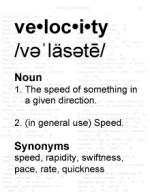|
This section contains 317 words (approx. 2 pages at 300 words per page) |
Consider two inertial observers. One, Jonathan, sits on a railroad train, which is traveling to the right with a constant velocity u, as measured by Nicholas, who stands by the railway embankment. Jonathan throws a ball towards the front of the train, which, according to him, travels with velocity v&vprime;. According to Nicholas, the ball is moving to the right with a speed v, given by the simple (and almost intuitive) Galilean velocity addition rule: v=v&vprime;+u. This rule follows directly from the Galilean transformations relating space and time measurements made by our two observers. Einstein showed in 1905, however, that in order for the speed of light to have the same value for all inertial observers, the Galilean transformations must be replaced by the Lorentz transformations. The requirement that the laws of physics be Lorentz invariant leads to a new, relativistic rule for the addition of velocities: v= (v&vprime;+u)/(1+(v&vprime;u/c[sup2 ])).
This differs from Galileo's result by the presence of the v&vprime;u/c[sup2 ] in the denominator. For all practical purposes, this term is exceedingly small, as either v&vprime;, u, or both, are much smaller than the speed of light, c. The value of v will differ only infinitesimally from the Galilean value. Thus we are free to use the Galilean result in the example above.
But, as is easily checked, its presence in the denominator ensures that the velocity of light is identical for all observers. If Jonathan shines a flashlight toward the front of the train, so that v&vprime;=c, a simple calculation shows that v=c, as well. The relativistic value for v will differ appreciably from the Galilean if either v&vprime;, u, or both, are appreciable fractions of the speed of light. Then the extra term ensures that v is always less than c.
|
This section contains 317 words (approx. 2 pages at 300 words per page) |


